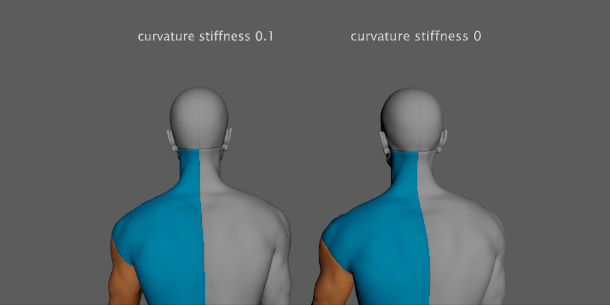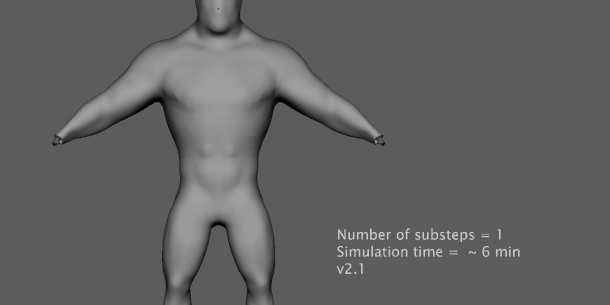Unity releases Ziva VFX 2.1

Unity has released Ziva VFX 2.1, the latest version of its soft tissue simulation plugin for Maya.
The update introduces a new method for detecting collisions between tissue layers, and new tissue stiffness and damping controls to improve the quality of the simulations the plugin generates.
A powerful tool for creating stable, accurate simulations of soft tissues
First released publicly in 2017, Ziva VFX is now a staple of visual effects pipelines, with users including DNEG, Scanline VFX and Image Engine.
The plugin mimics the stiffness, density and volume preservation of real tissues, including bone, tendons, muscles and skin; and supports multiple types of physical damping.
As well as editing parameters directly, Ziva VFX supports a brush-based workflow making it possible to paint material properties and mesh resolution, and even paint in muscle attachment points and muscle fibres.
The plugin was acquired by Unity last year along with its original developer, Ziva Dynamics.

New in Ziva VFX 2.1: Continuous Collision Detection, new tissue stiffness and damping controls
Ziva VFX 2.1 introduces a number of new features intended to improve the quality and stability of simulations, including a new method for detecting contacts between tissue layers.
Discrete Collision Detection has been replaced by Continuous Collision Detection (CCD), which interpolates the past positions of vertices with their current positions to find contact points.
Individual simulation timesteps now take longer to compute, but fewer substeps are required to resolve problems with tissues penetrating one another, which “can often lead to faster simulation times”.
The update also adds a new curvature stiffness attribute to the ZMaterial node, enabling users to adjust the resistance of tissues to bending.
Increasing curvature stiffness can reduce artefacts in simulations: the image at the top of this story shows it being used to reduce creasing around the character’s shoulder when the arm is raised.
The zAttachment node, using to connect layers of tissue together, gets a new damping attribute, which can be used to reduce unnatural-looking oscillations in simulations.
In addition, the Iterative Solver introduced in Ziva VFX 2.0 as an alternative to the Direct Solver now supports all four integration methods available to calculate the state of a simulation at the next time step.
Pricing and system requirements
Ziva VFX 2.1 is available for Maya 2019+, running on Windows 7-10 or RHEL/CentOS 7.3+ Linux.
Ziva VFX Indie, intended for productions with total revenues of under $500,000/year, costs $50/month or $500/year. For larger projects, Ziva VFX Studio is priced at $1,800/year.
Perpetual Studio licences are available “upon request”.
